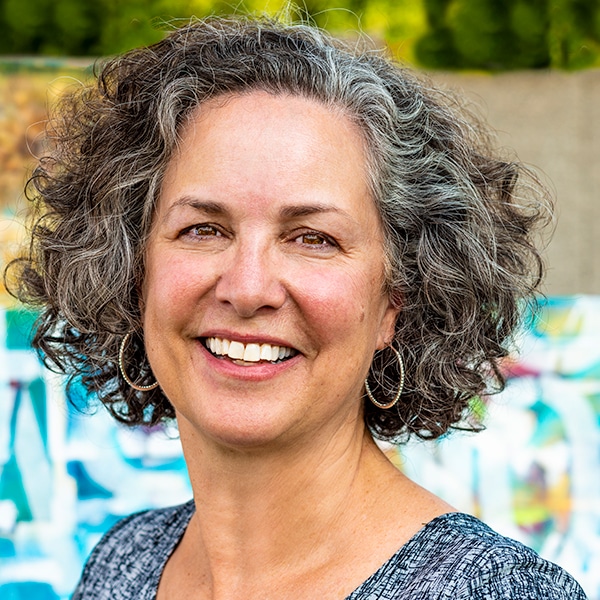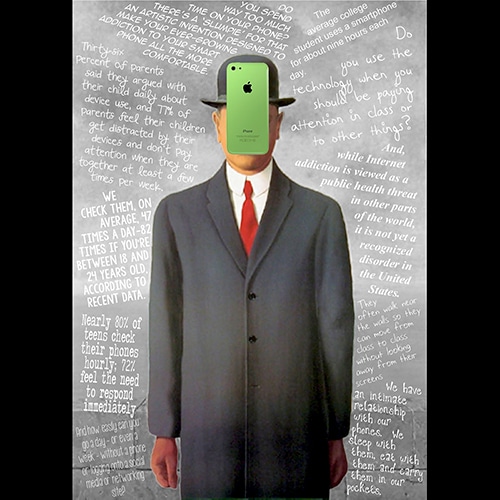GEN 106: History of Art
Build a conceptual framework for understanding art
What essentials do artists and designers just need to know? In this online art history course, you'll build a foundation in art and the artists who created it. You'll explore profound themes that have concerned artists for centuries: nature, the human body, society, religion, and politics. Through engaging lectures and projects, you'll learn how to identify the mediums, materials, and techniques artists use and discuss the styles of important artists, art movements, and historical periods from antiquity through the mid-20th century.
About This Course
Project-Based Learning
Research and writing projects will challenge you to explore a wide range of art and develop your ideas on nature, abstract art, men and women through the ages, the representation of labor, spirituality in art, and contemporary protest art.
What Skills Will I Develop?
Students in this course can expect to learn to:
- Gain an understanding of the materials and techniques used in drawings, paintings, prints, and sculptures.
- Identify and discuss key turning points in the history of art and their impact on styles and techniques.
- Analyze and discuss art with different historical periods and art movements including Classical Greece and Rome, Renaissance, Baroque, Romanticism, Impressionism, and early 20th century styles.
- Examine distinguishing features of signature works of great artists.
- Develop a critical vocabulary for discussing and analyzing art.
- Explore the theme of nature in art and its relationship to abstraction.
- Compare the representation of the human body in art and how it has changed in different eras.
- Investigate the theme of realism in art and how artists throughout the ages have approached the subject.
- Evaluate the role of religion in art in the East and West through ritual objects, architecture, and artwork.
- Gather an understanding of the role of power and protest in art from the Middle Ages onwards.
What Software and Supplies Do I Need?
- Computer with Internet connection.
- MS Word or equivalent program.
Course Instructor(s)
The course is taught by the following instructor(s):
 Dr. Robin Masi Carlson
Dr. Robin Masi Carlson
Dr. Robin Masi Carlson is an educator and exhibiting artist whose creative work has been shown in Rome, Boston, New York, Washington, DC, Atlanta, and San Francisco.
 Dr. Meryl Epstein
Dr. Meryl Epstein
Dr. Meryl P. Epstein is the Dean of Academic Affairs for Sessions College. Meryl has extensive experience in design, education, and leading academic teams and has served as Dean of Academic Affairs, Program Chair, Doctoral Development Faculty, Art Director, Graphic Design Manager, Faculty member, and Exhibiting Artist/Photographer.
View all Faculty
Course Outline
The Language of Art
We will begin the course by exploring the nature of art, the aesthetic experience, and the artistic process. You'll learn how to identify the visual elements in an artist's composition and study some of the important mediums, materials, and techniques used in creating art throughout the ages: drawing, painting, sculpture, and printmaking. To develop tools for thinking about art, you'll examine about some of the critical methodologies academics and writers have used to analyze art.
Looking at Nature
Since the dawn of history, art has been influenced by natural world. This week's class explores how artists have looked at nature, beginning with cave art and early Egyptian, Islamic, and Chinese art, and extending through the Renaissance and Baroque periods to the 19th and 20th century. You'll learn how and why the representation of nature changed at critical junctures and explore the relationship between nature and abstractionism.
Art and the Human Body
The human figure has always been a favorite subject for artists. Since ancient times, painters and sculptors have portrayed the most important people in their societies. This week, you will study not just the treatment of the human body throughout the history, but also the motivations and psychological factors involved in portraying a human subject. You'll study the idealized figures of Classical Greece and Rome, and examine how this approach evolved in the Renaissance and Baroque periods and in 19th and 20th century sculpture. You'll also learn why the body of the artist plays such an important role in the contemporary art world.
Art and the Social Realm
Art is a window on society. For centuries, art has been used for all sorts of social commentary: to express political beliefs, attack social ills, criticize war and poverty, send up kings and queens, and more. This week's class explores how representations of society have changed throughout the ages. Topics examined include the social and historical factors in Baroque art, Romanticism, Realism, Impressionism, Expressionism, Social Realism, and Pop Art.
Art and Religion
From Renaissance Rome to Africa, China, Japan, Central and South America (and beyond), artists have created art for religious and ritual purposes—or in modern times, grappled with spiritual and mystical themes. In this session, you'll explore the important role religion has played in art, studying ancient ritual objects, religious architecture, Byzantine mosaics, and even modern transcendental painting. The lesson will help you connect the traditional role of art in religion its modern-may manifestations, including myth, symbolism, and mysticism.
Art and the Politics of Power
Art with a social conscience can be political—a voice of protest, an attempt to spark awareness of an issue—or it can be documentary, a study of social relationships or a spotlight on a certain group of people. In this final lecture, you will explore art's role in supporting or protesting against a specific ideology or political position. The lesson begins by examining art in Gothic cathedrals, which were once seats of political (as well as religious) power, and discussing the role of politics and patronage in Renaissance art. Then you'll learn how Dada and Surrealism emerged as art movements that challenged the values and power structure in art and study how Communists used art as propaganda. You'll wrap up with a look at Mexican revolutionary murals and modern Feminist art.
Frequently Asked Questions (FAQ)
How Do The Courses Work?
Our courses are project-based and instructor-led. In each course you’ll complete a series of lectures, projects, discussions, and critiques designed to stretch your creative skills. Weekly assignment deadlines keep you on track, and with no set-logins or Zoom meetings, you can build your studies around your schedule.
Who Are The Instructors?
Our courses are developed and taught by our industry-leading faculty of creative professionals. This means that you’ll learn in-demand skills, get feedback on your work, and build a portfolio of creative work. View our Student Gallery for featured student projects.
When Can I Start?
Classes start January, April, and August, and this course is completed in a 15-week term. College credit from this course can be applied to a range of Degree and Certificate programs at Sessions College. You can enroll in this course on an individual basis or as part of a program.
Explore our Programs: Bachelor's Degree | Associate Degree | Undergraduate Certificate
How Do I Register?
To register for a program, complete our program application. To register for this course on an individual basis, please contact our admissions team at admissions@sessions.edu. An Admissions Advisor will contact you to setup your enrollment.
| Course Tuition and Fees | |
|---|---|
| Tuition | $300/credit |
| Registration Fee* | $200 |
| Total Course Price | $1100 |
Registration fees are nonrefundable after 5 days from enrollment.
Is Sessions College Accredited?
Yes. Since 2001, Sessions College has been accredited by the Distance Education Accrediting Commission (DEAC). The Distance Education Accrediting Commission is listed by the U.S. Department of Education as a recognized accrediting agency and is recognized by the Council for Higher Education Accreditation (CHEA).
RELATED PROGRAMS AT SESSIONS COLLEGE:






















